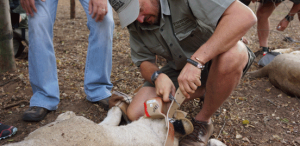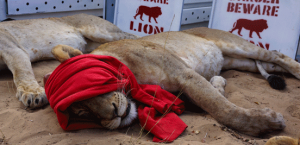 andBeyond has donated five lionesses from Phinda Private Game Reserve to be translocated to Rwanda as part of an African Parks project aimed at reversing the local extinction of the species in Akagera National Park.
andBeyond has donated five lionesses from Phinda Private Game Reserve to be translocated to Rwanda as part of an African Parks project aimed at reversing the local extinction of the species in Akagera National Park.
Lions became extinct in Akagera 15 years ago, as Rwanda experienced a period of intense upheaval following the 1994 genocide, resulting in the lack of management of its national parks and the subsequent poisoning of lions by cattle herders.
andBeyond Phinda has a long history of lion conservation in South Africa. It was one of the first private game reserves in South Africa and the first in the province of KwaZulu-Natal to introduce lions, thereby extending their historical range. Since the first 13 lions were introduced in 1992 and 1993, almost 220 lions have been born on the reserve. andBeyond Phinda has helped establish other lion populations in private game reserves in the Eastern Cape, Zululand, Mpumalanga, North West and the Limpopo Province, as well as neighbouring Mozambique.
The reserve is also a founding member of the Lion Management Forum of South Africa (LiMF), which aims to promote best practice in lion management and conservation in Southern Africa, generating industry norms and standards for lion conservation. andBeyond Phinda has contributed significantly to a number of research papers published under the auspices of LiMF. Phinda Conservation Manager Simon Naylor has also been nominated as a LiMF trustee.
 andBeyond Phinda is also proud to have been home to one of the oldest lions known outside of a zoo, a female that was introduced as an 18-month-old in May 1992 and died of injuries caused in a fight at the age of almost 20 in September 2009.
andBeyond Phinda is also proud to have been home to one of the oldest lions known outside of a zoo, a female that was introduced as an 18-month-old in May 1992 and died of injuries caused in a fight at the age of almost 20 in September 2009.
“With our long history of lion conservation and company ethos of Care of the Land, Care of the Wildlife, Care of the People, it was a natural choice for us to become involved in a translocation of this significance. The five lionesses that we have donated have been carefully selected and are very touristfriendly, disease-free and genetically diverse. Together with the two males donated by Ezemvelo KZN Wildlife, they will make a very suitable founder population for Akagera National Park,” says Naylor. “Studies have shown that Phinda’s lions are the second most genetically diverse population in South Africa.”
Prior to translocation, the five lionesses were held in a boma at andBeyond Phinda, where they were fitted with satellite collars. This will enable the Akagera management team to monitor the lions’ movements and reduce the risk of them breaking out into neighbouring community areas. The collars have a two-year life span, which will allow ample time to monitor pride dynamics as the lions settle in.
As an additional precaution, the park’s fence has also been reinforced to keep the predators in. In preparation for the translocation, the Akagera management team has been running a comprehensive sensitisation programme in the communities surrounding the park to educate the reserve’s neighbours about the significance of lions in the natural environment and promote harmonious co-existence.
The lionesses began their journey to Rwanda on 29 June, when they were tranquilised, placed in individual crates, loaded onto trucks and driven to Johannesburg. There the animals were loaded onto a charter flight and flown to Kigali, the capital of Rwanda. From here, they were transported by road to Akagera National Park, with their arrival scheduled for 30 June. Accompanied and monitored by an experienced veterinary team, the lions are kept tranquilised throughout to reduce stress.
On arrival in Akagera, the lions will be placed in a specially-erected 1 000 m² (10 800 square foot) boma, which is split into two separate enclosures and surrounded by a three-metre (10-foot) high fence. A water reserve has been constructed within the boma and the lions will be fed every three to four days, replicating their natural feeding patterns. The animals will be monitored for a minimum of 14 days before being released.
“We are proud to have been part of this ground-breaking project, which shows the private sector, a non-governmental organisation and the government of Rwanda working together for the good of conservation,” concludes Naylor.
